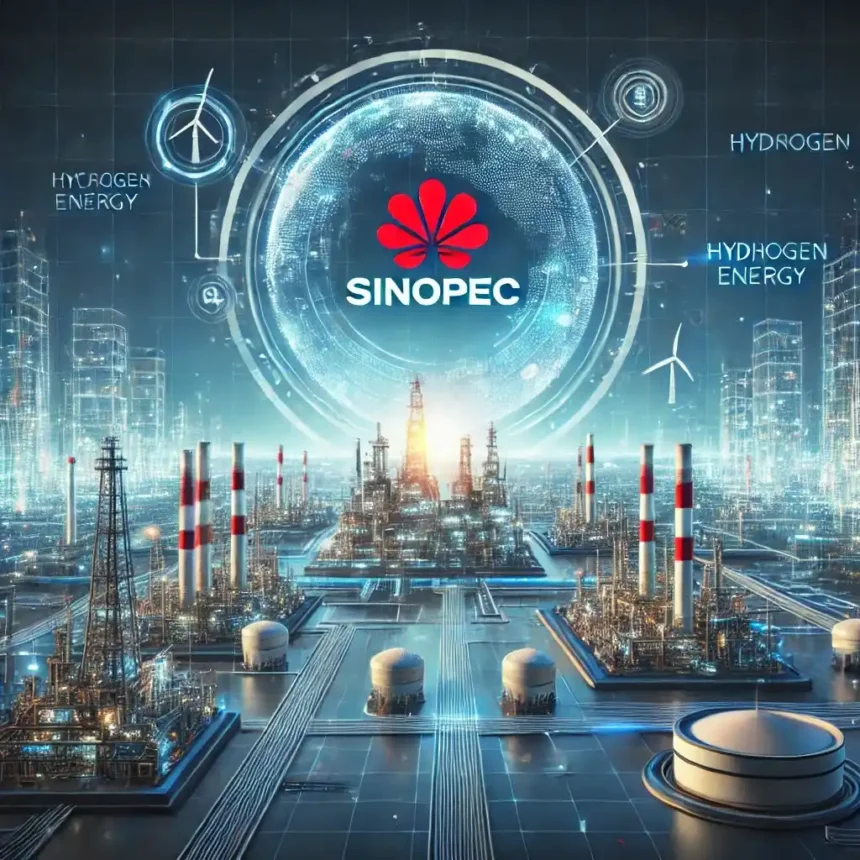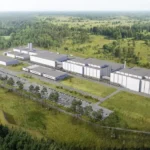The energy sector remains among the most vibrant dynamic and essential industries driving the global economies. Within this context, Sinopec is one of those companies that have maintained a very fast as well as significant rise in growth. What originally started as a government initiative has since developed into a company taking a leading place among global leaders in oil, gas, and petrochemicals. While many people know Sinopec due to its huge refining and strong financials, the story of its modest beginnings to one of the largest energy companies worldwide is a wonderful story of strategic growth, innovation, and world expansion.
Here in this blog, we will try to shed light on the inspiring history of Sinopec and its founders and leadership. The blog covers the following major areas of discussion different business strategies, its key initiatives in innovation, its financial performance, and the building blocks- that have forged Sinopec into such a formidable force in the current energy industry. Beijing proved that it could hold up with the rest of the show, and Sinopec walked as proof of how vision, execution, and manageability could consolidate into being hardly paralleled by success at the competition.
The Making of Sinopec
Sinopec Corporation or China Petroleum & Chemical Corporation was formally established in 2000 when China took steps to re-organize and strengthen the oil and gas sectors of the country. However, the origins of the corporation go back even further, beginning with the broad initiative taken by the Chinese government in the 1980s for a more organized and competitive energy sector. It was during this time that the country was devising strategic measures to reorganize its state-owned enterprises (SOEs) into efficiency improvements, maximization of output, and enhancement of competitiveness in the international market.
Thus, the birth of this startup was to create a national champion in the petroleum and petrochemical industries. Before its formation, China’s oil and gas sector consisted of a plethora of regional and state-run entities operating without maintenance. This manifested in ill efficiency in resource allocation, investment, and competitiveness in the market. Realizing that a unified approach must be taken, which would dovetail harmonization-company mergers and consolidation of key players result was Sinopec, a vertical energy powerhouse integrated within itself.

Besides, unlike other startups that emanate within garages or small offices, Sinopec’s establishment was built through government backing, thus making it possible for it to acquire large resources as well as infrastructures. The establishment was a strategy to promote energy security for China while, at the same time, reducing reliance on foreign oil companies. By then, it was expected that Sinopec would integrate upstream and downstream production to improve the company’s refining infrastructure and expand its domestic and international reach.
During the early years of China’s oil monopoly, Sinopec shifted its attention to refining and chemical production, gaining from the fast-growing industrial economy of China. Thus, Sinopec has established itself as one of the major oil fields and consolidated petrochemical hubs from east to west in China. Furthermore, the company gradually expanded by acquiring and modernizing refineries, creating broad pipeline networks, and establishing partnerships with global energy firms concerning expertise and capital for investment.
Through the decades, Sinopec capitalized on the government’s backing to beef up an aggressive growth strategy: Quickly enhancing refining capacities, opening the doors to new energy exploration projects, and forging its way into the international arena. And it now stands towering above all the giants in energy, strong in oil exploration, refining, chemical manufacturing, and retail distribution. Such a long journey as an initiative backed by the government into a leading multinational energy corporation in the world demonstrates how strategic planning, innovation, and adaptation can turn into strong weapons in a rapidly evolving global industry.
Founders and Leadership
This startup was created as a state-owned enterprise, thus the fact that birth had everything to do with officials from the Chinese government and industry experts. Unlike private-sector startups, the business has structured governance levels that have established for them leadership expected to be consistent with the national economic objectives of China. Much of the executive appointments of the corporate governance experience by the Chinese government have been played at the aggrandized level by giving head positions to those who had a wealth of experience in energy markets.
One of the leading figures in the early development of Sinopec was Chen Tonghai, its chairman, known for having played an instrumental role in extending the refining capacity of the company as well as creating its market presence. Under his direction, Sinopec pursued an aggressive program of mergers and acquisitions and investments in infrastructures to strengthen its position across the landscape of the global energy arena.
Another of the big names in Sinopec’s history was Fu Chengyu, who broke the frontiers of the firm in its global reach. On his watch, Sinopec bagged several important oil prospecting and refining contracts across Africa, the Middle East, and Latin America. He also pushed for Sinopec’s drive into cleaner energy alternatives, thereby making the company a more diversified energy enterprise.
More recently, Ma Yongsheng has held a chairmanship and presidency at Sinopec, pushing the company towards innovations and sustainability. The focus of his leadership lies in Hydrogen Energy, Carbon Neutrality Projects, and Digital Transformation to further consolidate Sinopec’s position. Further, he intends to improve the operational efficiency of this company and its footprint through the optimization of smart technologies like artificial intelligence (AI) and big data analytics.
The Sinopec leadership team is a mixture of seasoned energy executives, economists, and strategic planners. In keeping with the hierarchical structure of governance in Sinopec’s organization, executives align corporate strategies with China’s general objectives of energy security and sustainability, working closely with government officials.
Sinopec’s leadership collaborates with international partners, research institutes, and industry experts to help facilitate technological development. Their commitment to innovation and operational excellence has made Sinopec a global leader in the changing energy world.
Business Model and Growth Strategy
Sinopec’s business model is founded on vertical integration, empowering it to control all stages of the oil and gas supply chain. This arrangement improves efficiency decreases cost and guarantees a seamless flow of resources from exploration to distribution. This diversified adopted growth strategy has sustained Sinopec in remaining competitive against the ever-changing energy landscape.
Key Pillars of Sinopec’s Business Model

- Exploration & Production (Upstream Operations)
Sinopec is heavily involved in the exploration of oil and gas, both within the borders of China and internationally. Unlike some competitors that obtain crude oil in foreign supplies, Sinopec conducts exploration drilling and extraction of oil and gas resources to sustain its operations.
Domestic Exploration: Sinopec operates major oil fields across China, including in Xinjiang, Sichuan, and Bohai Bay. Heavy investments are made in advanced drilling technologies with the intent to boost domestic production.
International Exploration: Sinopec steered aggressive ventures for exploration rights across oil-rich countries, entering into partnerships and acquisitions in Africa, the Middle East, Russia, and Latin America. Long-term oil supply agreements are thereby secured by Sinopec to ensure uninterrupted crude oil supply to its refining operations.
Unconventional Resources: Aiming to maximize energy security, Sinopec is currently investing in shale gas exploration and deep-sea drilling projects, and testing new hydraulic fracturing technologies to exploit natural gas reserves that have never been tapped.
- Refining & Petrochemicals (Midstream Operations)
Sinopec is one of the largest refiners across the globe, processing millions of barrels of crude oil per day into petroleum products and petrochemicals. With this refining capacity, it could manufacture gasoline, diesel, jet fuel, lubricants, and high-value chemicals used in industries ranging from plastics to pharmaceuticals.
- Refining: Sinopec operates some of the largest and most technologically advanced refineries in the world-in China, Shanghai, Guangzhou, and Zhenhai. They incorporate the most advanced techniques to enhance fuel efficiency and curtail waste generation.
- Petrochemicals: Leading the way in the petrochemical industry the basic chemicals produced by Sinopec-ethylene, polyethylene, and polypropylene are consumed in large quantities by the consumer, textile, and industrial manufacturing sectors.
- Environmental: In its modernization efforts, Sinopec has introduced low-emission technologies that cut down pollutants and enhance energy efficiency in the refining industry. Biofuels and synthetic fuel alternatives are also being invested in to address the carbon footprint.
3. Retail and Distribution (Downstream Operations)
There are vestiges of control of Sinopec in fuel retail. The company manages one of the largest networks of gas stations and retail sites in China. This model of direct-to-consumer selling allows Sinopec to control the price, distribution, and sales of fuel, thereby creating a revenue stream and risk mitigation.
- Gas Station Network: Known for having over 30,000 service stations in China alone, Sinopec is a leading global distributor of fuel, dispensing millions of gallons of fuel every day to customers. The company has also made very significant strides in some selected key international markets.
- Convenience Store Expansion: Sinopec is mixing convenience stores, food retail drink outlets, and e-commerce partnerships within its gas stations to broaden the extent of its retail business. This conforms with the emerging trend of multi-service stations for fuel.
- Digital Payments & Loyalty Programs: This startup has embraced digital transformation by incorporating mobile payments, loyalty programs, and smart stations for fueling its outlets, which enhances the customer experience
Competitive Advantage & Growth Strategy
Sinopec follows a multi-pronged strategy in maintaining leadership as well as expanding market influence:
1. International Expansion & Strategic Partnerships
Sinopec continues to enlarge its global footprints by purchasing interests in energy companies abroad or affixing long-term supply contracts along with establishing joint ventures with international oil giants.
- Partnerships in the Middle East: It has secured a supply of crude to Sinopec from Saudi Arabia, UAE, and Kuwait. It also co-invests in refining projects with those partners.
- African Oil Ventures: Major oil fields in Angola, Nigeria, and Sudan were invested by the oil company, establishing footholds in Africa’s budding energy markets.
- Latin America & Russia: Similar to this, The startup has struck contracts to explore oil in Brazil, Venezuela, and Russia. It is now tapping vast oil reserves and diversifying its chains of supply.
2. Digital Transformation & Intelligent Energy Innovations
Sinopec has put money into new technologies to optimize energy production and improve supply chain efficiencies and sustainability efforts. It is interesting to point out how Sinopec is bringing AI and big data into oil exploration because they have worked, especially, on improving the accuracy of drilling, predicting when equipment would fail, and lastly improving measures for safety. Sinopec adopted a blockchain for improving transparency in their supply chain. Using the innovative technology made by Sinopec, there will be a tamper-proof and transparent system for crude oil shipments, refining processes, and fuel distribution.
Smart Gas Stations and IoT Integration- Sinopec is enhancing its gas stations with IoT sensors and automated refueling systems coupled with AI-driven customer analytics for operational efficiency.
Sustainable Growth & Renewable Energy Investment
This is how the market is deeming itself into increasingly cleaner energy solutions; however, Sinopec is moving away from mainly fossil fuels to sustainable alternatives.
- Hydrogen Energy Development: Sinopec has newly initiated a wide-ranging hydrogen energy initiative by planning to set up over 1,000 hydrogen refueling stations nationwide by 2030.
- Solar and Wind Energy Investments: This comes after the company started investing in solar and offshore wind projects in collaboration with international renewable energy firms to diversify its energy portfolio.
- Carbon Neutrality Goals: Sinopec gave a timeline with a promising target of carbon neutrality by 2050 along with the implementation of CCUS technologies to offset the emissions or to capture usages and store them.
Diversity Beyond Oil and Gas
Sinopec understands that the future of energy lies outside oil and gas. They have opened their arms to other development areas to secure future growth.
- Battery Technology & EV Charging Infrastructure: Sinopec is working with car manufacturers building EVs for fast-charge network development and battery technology solutions.
- Green Chemical Production: The company researches bio-based plastics and eco-friendly better chemical alternatives in sync with sustainability trends.
- International Market Expansion: The company has an eye on expanding within the emerging Asian and African markets, especially as energy demand continues to grow in such countries through urbanization and industrialization.
The Future and Growth Opportunities

Sinopec is redefining itself from a national to a global energy leader through its business investments in a hybrid of traditional and innovative sustainable energy solutions. The company has identified its growth strategies as follows:
- Acquiring new oil and gas reserves to expand its international energy asset portfolio.
- Accelerating the digital transformation to help improve productivity and operational costs.
- Deepening its sustainability initiatives investing in infrastructure for renewable energy and hydrogen.
- Ensuring customer acquaintance through payment systems, mobile applications, and artificial intelligence value-added services.
In general, Sinopec is a financially strong and strategically flexible energy company that can deal with such challenges as fluctuating oil prices, pressure from oil and gas regulators, and the global “decarbonization” pushes. With such a forward-looking mindset, the firm is indeed well-poised to lead the energy industry most promisingly within several coming years concerning innovation, sustainability, and market dominance.
Corporate Innovation and Sustainability Initiatives
With global sustainability efforts gaining momentum, Sinopec has made significant strides in green energy and conservation. The oil major is still on the move for cleaner energy sources and has several essential initiatives, including:
- Hydrogen Energy Development: Sinopec has a vision to be a leader in hydrogen energy with plans to build hydrogen refueling stations across China. Its investment in hydrogen fuel cell technology lays the groundwork for a clean energy future. Sinopec is also engaging with key industry players in the hydrogen production and infrastructure development space.
- Carbon Capture and Storage Projects: Sinopec has launched projects to capture and store carbon which makes it possible to have lower environmental impact. Through these projects can be accomplished both reducing greenhouse gas emissions and overall improvements to sustainability. By enabling itself with advanced CCS technology, it reduces not only its carbon footprints but also a large part in mitigating climate change.
- Renewable Energy Investments: Even as an oil and gas giant, Sinopec is steadily investing in renewable sectors of energy such as wind and solar. The company has invested in offshore wind farms and mega solar power installations. All of them go in line with the major policy commitment of China’s carbon neutrality goal to be achieved by 2060 and also make the power fully proactive in the emerging energy landscape.
- Smart Technology Integration: Sinopec already employs virtual intelligence and big data analytics to enhance production efficiency within its operations, reduce wastage, and improve energy management. Automation and smart grids should augment energy demand to reduce environmental impact.
Financial Performance and Market Status
Turnover and Revenue
One of the highest in the world, Sinopec earns more than $400 billion a year and ranks among the decade’s energy industry top earners. Backed by master refining operations, wide distribution networks, and almost global business activity, financial strength is insistent. Adaptability to changing oil prices and markets providing it with avenues for maintaining financial stability and growth.
- Investors and Stock Exchange Status
- Sinopec is publicly tradeable on major stock exchanges, such as:
- Shanghai Stock Exchange (SSE)
- Hong Kong Stock Exchange (HKEX)
- New York Stock Exchange (NYSE) (as an ADR – American Depositary Receipt).
Despite its government ownership, Sinopec attracts a wide range of investors, including institutional retail investors, private equity firms, and individuals. The movement of its shares is usually a related attribute to monitoring the pulse of the Chinese economy and energy sectors. Sinopec also engages in the distribution of dividends and share buy-back programs, and it is among the most exciting investment opportunities. The continued profitability of the company and its initiatives blessed with the government’s backing only heighten its attractiveness.
Future Outlook
The company is solar in a moving sky under the orbital path of global transition, driven by innovations in energy law and the green footprint economy. Growing investments in carbon reduction initiatives, smart technology, and green energy will equip the corporation with savvy navigation skills in the current shift in the energy landscape. Investors and stakeholders will continue to flood the company because of its financial performance and tight market position.
Sinopec’s proactive policy in clean energy solutions would determine how the future would depend on the next generation of energy used for manufacturing and consumption as the planet gears toward a sustainable future. Of account for profits and responsibility to the environment, Sinopec sets a precedent against which the future growth of the industry will be judged.
Sinopec has been set up for many decades to continue keeping its benefits tops in the world’s energy market. Long-term financial stability and cleaner energy are mapped in a clear road map.












